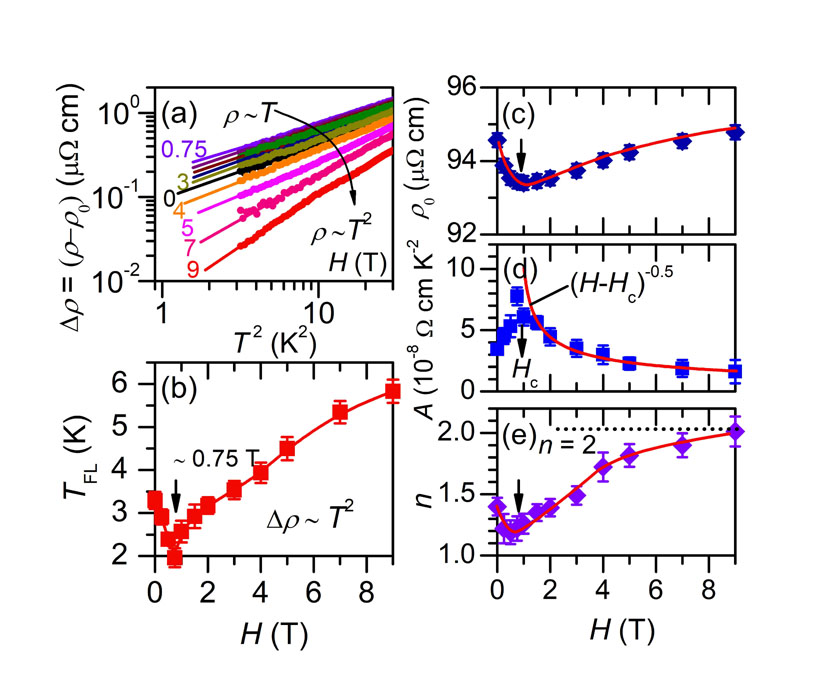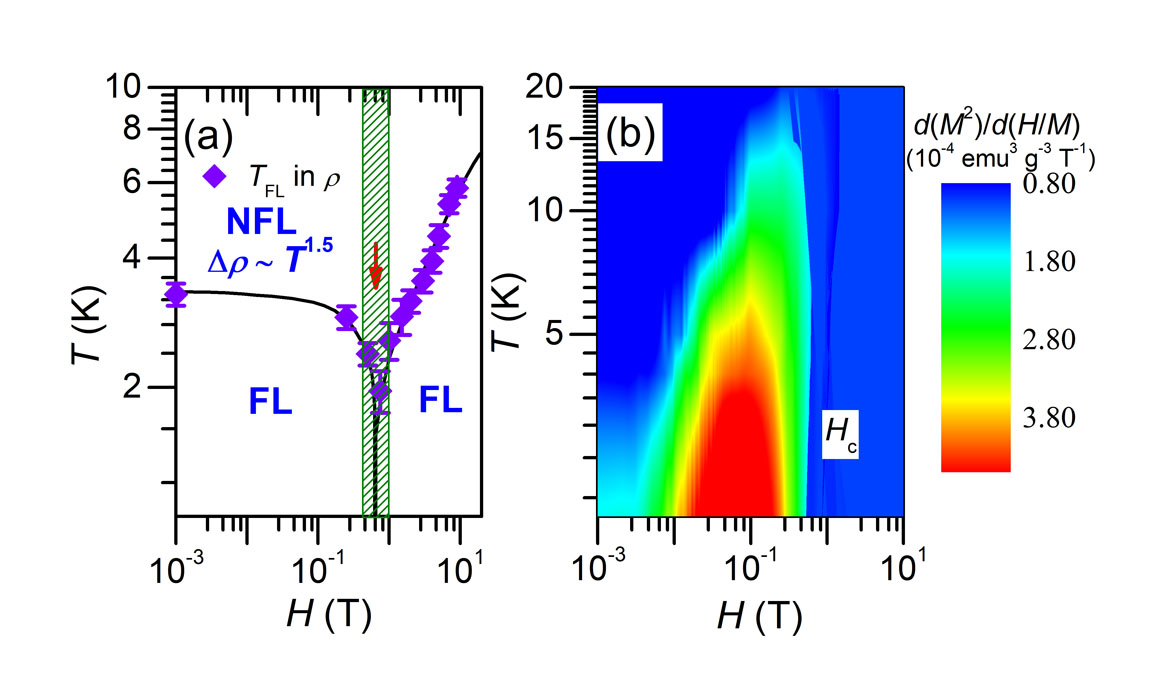Weak Ferromagnetism and Possible Non-Fermi Liquid Behavior in Itinerant Electronic Material Co3SnC
Uwatoko Group
In Fermi-liquid (FL) theory, the quasiparticle (QP) approximation and the generalized Boltzmann equation can describe the collective behaviors of strongly correlated multi-electron systems. For magnetic materials, strong magnetic correlations usually induce large changes in the QP-QP interactions, which make the QPs behave abnormally. Especially, when approaching the magnetic quantum critical point (QCP), various pronounced deviations from the Landau FL behaviors appear, e.g., non-Fermi liquid (NFL) and strong enhancement of the QP effective mass. On these issues, many correlated electronic materials including the heavy fermion (HF) systems have been studied through tuning the magnetic orders by strengthening the hybridizations between the 4f and conduction electrons and/or enhancing the magnetic correlations via external parameters. These studies are helpful to reveal the intrinsic characteristics of the competing electronic orders near QCPs.

Fig. 1. (a) Δρ(T) vs. T2 in a log-log scale; the arrow shows the crossover from T- to T2-dependence. (b) Field-dependence of TFL; the arrow shows the critical field; field dependence of the parameters: (c) ρ0; (d) A and the exponential fitting results by the (H-Hc)-0.5 (the red solid line); (e) n; the arrows in (c)-(e) indicate the change tendency and guides to the eye.
Cobalt-contained materials are such alternatives to explore exotic QCPs owing to the various spin states of cobalt ions and their strong response to the external stimuli. Especially for those materials with both localized and itinerant electrons, the varieties of magnetic transition and phase diagram are more interesting. Metallic perovskite M3M’X (M is transition metals; M’ is the main group elements; X is C, N) is such an example with diversified crystal structures and magnetic phase transitions. But the intrinsic magnetic interaction in M3M’X is controversial although various classical models were proposed. One possible reason for the absence of the universal theoretical model is that the system is not limited to the simple localized and/or itinerant interactions. Some reports have argued that these materials are close to the boundary of the localized and itinerant ferromagnetism and thus can be taken as an excellent platform to study the crossover between them. Among them, Co3M’X could be a good example to clarify these issues considering its unstable magnetic ground state and the abnormal quantum behaviors are expected by applying non-thermodynamic parameters.
In this study, weak ferromagnetism and NFL behaviors were observed in Co3SnC via measurements of magnetic properties, electrical transport and specific heat under magnetic fields. Magnetic measurements suggest that it undergoes a paramagnetic to itinerant ferromagnetic phase transition with NFL behaviors including the power-law temperature dependence of resistivity, the -TlogT-dependent upturn in specific heat, and the T4/3-dependence of inverse susceptibility. With increasing the magnetic fields, the temperature coefficient of T2-term in resistivity follows a (H-Hc)-0.5-divergence upon approaching the critical field Hc, apart from the 1/(H-Hc)-dependence with the whole Fermi surface under the singular scattering. The exponent n in the temperature dependence of resistivity shows an increase from n = 1.0 to 2.0 with increasing the field above Hc as the evidence for the field-induced crossover from NFL to FL behavior; the relative mass enhancement factor λ(H)/λ(0) reduce to nearly 60% at 9.0 T, indicating the gradual suppression of magnetic fluctuations and electron-electron scattering. The results indicate that Co3SnC is a good candidate for exploring itinerant quantum magnetic QCP.
References
- [1] B. S.Wang, Y. Uwatoko, J. -G. Cheng, and Y. P. Sun, Phys. Rev. B. 102, 085153 (2020)

